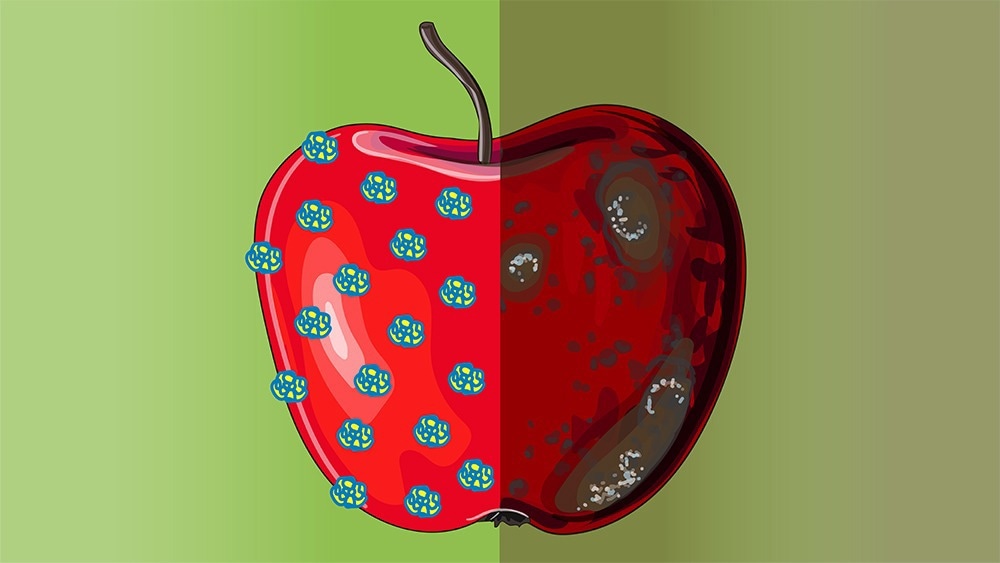To engineer produce that lasts longer and is free of bacteria, chemical engineering professor Dr. Mustafa Akbulut and professor of horticultural science Luis Cisneros-Zevallos have teamed up.

Image Credit: Texas A&M Engineering
In a recent study published in Current Research in Food Science, Akbulut claimed that during different phases of produce handling and post-harvest treatments, the global fruit and vegetable market loses more than half of its agricultural fruit production.
A coating of food-grade wax is commonly applied to fruits and vegetables to prevent water loss and for cosmetic purposes. Akbulut’s study blends such wax with nano-encapsulated cinnamon-bark essential oil in protein carriers to augment them with antibacterial characteristics.
We are living in an age where technology has advanced so much. However, the food industry has not competed with these advances, and there are continuous problems with food safety. News about foodborne diseases and outbreaks reporting hundreds of people becoming sick from unhygienic food frequently appears at the national level.
Dr. Mustafa Akbulut, Professor, Texas A&M University
The wax coating process used by Akbulut improves fresh food safety and offers a stronger defense against germs and fungi. The study claims that this composite covering has antibacterial properties that are both immediate and delayed.
Due to the lack of high temperatures that might inactivate foodborne bacteria, fruits, and vegetables that are ingested fresh or with minimum processing pose a particular risk.
According to Cisneros-Zevallos, the creation of this coating has improved the understanding of the interactions between the wax and undesirable microbes.
I think that the impact that these wax coatings will have on the industry is very big because the industry is looking for new technologies. This is one of those tools that we are developing that could actually help the industry face these challenges against human pathogens and spoilage organisms.
Luis Cisneros-Zevallos, Professor, Texas A&M University
Bacteria have a more difficult time adhering to and surviving on fruits and vegetables when essential oils are nanoencapsulated. According to the study, the delayed release of the essential oil lengthens the half-life of the product and active components when compared to their unencapsulated counterparts.
“When bacteria are exposed to essential oil it can break down the bacterial wall This technology is going to basically help us inactivate the bacteria and fungi to extend the shelf life,” Akbulut added.
Yashwanth Arcot, a doctoral student, conducted studies to bolster the findings.
This coating was also inhibiting the fungal attachment. We have tested this system against Aspergillus, a fungus responsible for the spoilage of food commodities and the onset of lung infections in humans. We were successful in preventing its growth on the hybrid coatings.
Yashwanth Arcot, Doctoral Student, Texas A&M University
According to Arcot, this is the first hybrid technology that uses food waxes with nano-encapsulated essential oil to fight germs and fungus.
The ingredients that go into making this hybrid wax are FDA-approved antibacterial agents.
Acrot added, “These hybrid wax coatings are easily scalable and can be implemented in food processing industries.”
Dr. Younjin Min from the University of California, Riverside, Dr. Alejandro Castillo from the Department of Food Science and Technology, and Dr. Matthew Taylor from the Department of Food Science and Technology are the other contributors to the study.
The United States Department of Agriculture’s (USDA) Food Manufacturing Technologies Program contributed partial support for this study. The USDA National Institute of Food and Agriculture's Specialty Crop Research Initiative also provided funding.
Journal Reference:
Arcot, Y., et. al. (2024) Edible nano-encapsulated cinnamon essential oil hybrid wax coatings for enhancing apple safety against food borne pathogens. Current Research in Food Science. doi:10.1016/j.crfs.2023.100667.
Source: https://tamu.edu/